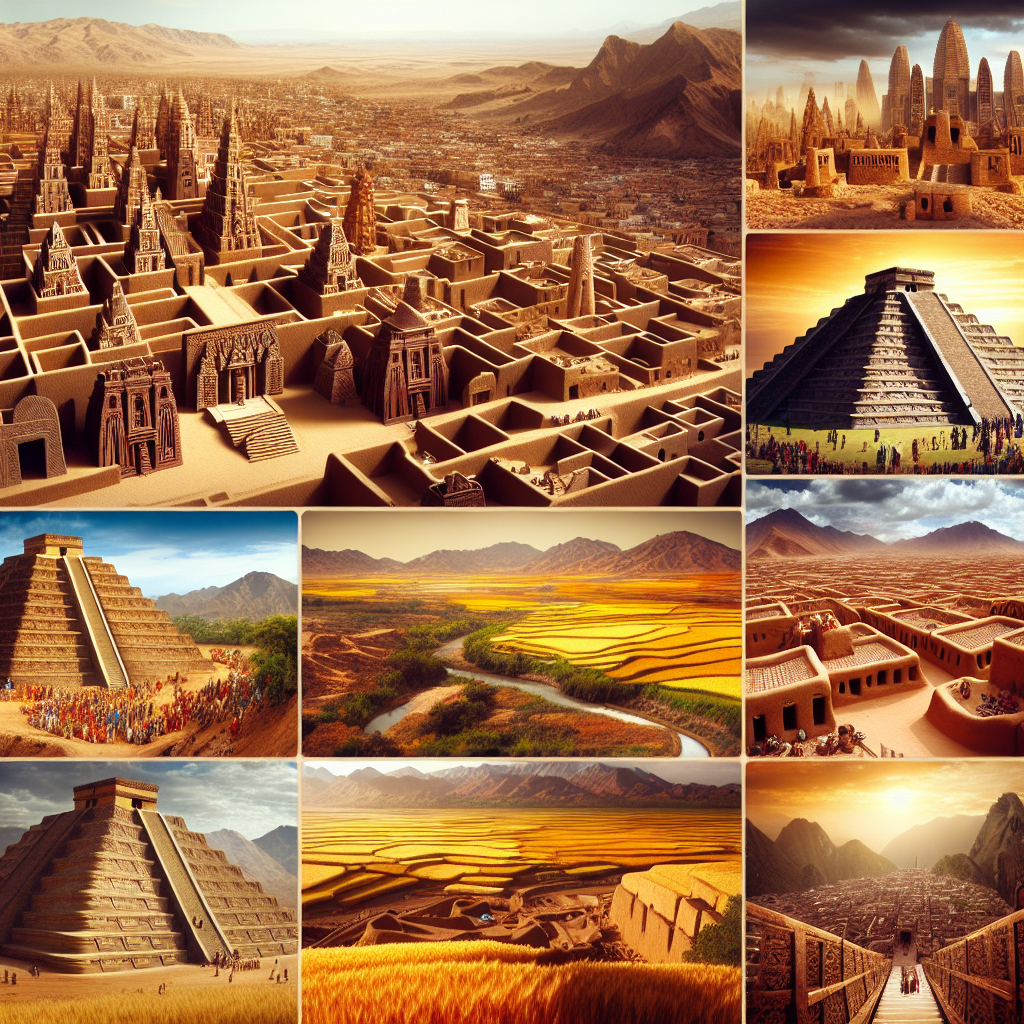Unveiling the Hidden Histories of Great African Civilizations
I. Introduction to African Civilizations
Ever wondered why the powers that be insist on telling us only a handful of stories when it comes to African history? It’s as if they think we’ll only tolerate a narrative that starts and ends with Egypt. Spoiler alert: there’s a whole continent brimming with rich histories that deserve our attention – and yes, we’re here to spill the tea (or should I say, the hibiscus tea) about these overlooked treasures. In this blog post, we’re peeling back the layers of history to celebrate the great African civilizations that have shaped us all in more ways than we can count.
II. The Great Kingdoms of Africa
Africa isn’t just a country or a one-dimensional backdrop for some ancient rom-com; it’s a vibrant mosaic of kingdoms and cultures, each contributing unique innovations and resilience to the global stage. Let’s take a stroll through five of the most influential African kingdoms: the Kingdom of Kush, the Axum Empire, Great Zimbabwe, the Mali Empire, and the Songhai Empire. These societies not only showcase the diversity of African cultures but also serve as a testament to human creativity and endurance against all odds—including those pesky colonial narratives aimed at erasing us.
III. The Kingdom of Kush: A Great African Civilization
Situated just south of Egypt—in case you didn’t know, the Egyptian pyramids weren’t the only ones in town—the Kingdom of Kush held its ground between 1070 BC and 350 AD, whispering sweet nothings to history with its impressive architectural feats. They built pyramids that could easily take on their northern neighbor’s, along with a treasure trove of intricate sculptures celebrating their powerful leaders (including the fierce Queen Amanirenas). Imagine a neighborhood where you not only conquered your history books but the pharaohs too; that was Kush.
IV. The Axum Empire: A Pioneering Civilization
Born around the 1st century AD, the Axum Empire was the cool kid on the block with prime real estate at vital trade routes. This empire didn’t just adopt Christianity; they casually made it an integral part of their identity under King Ezana, showing everyone how to blend spiritual enlightenment with economic prowess. Axum gifted the world monumental stone architecture, including its iconic stelae that stand tall like the “We’re here and we matter!” message they send to anyone still living in an ignorant bubble. Its legacy paved the way for modern Ethiopian identity—a fact worth knowing, right?
V. Great Zimbabwe: Architectural Marvels
From the 11th to the 15th centuries, Great Zimbabwe flexed its architectural muscles with stunning stonework, such as the Great Enclosure, which had the audacity to be built without mortar. And let’s not gloss over its role as a trade nexus, where gold and ivory flowed like water. If you’ve ever heard someone insist that outsiders must have built those structures, remind them that misinformation is as old as time. Archaeological findings are clear! These were built by the incredible people of African descent. Talk about a cultural mic drop!
VI. The Mali Empire: Wealth and Culture
Let’s talk about wealth—like, Mansa Musa-pilgrimage-to-Mecca wealth. Founded in the 13th century, the Mali Empire knew how to flaunt its riches through trans-Saharan trade, notably in gold and salt. Timbuktu wasn’t just a clever phrase to use for distant places; it was the OG hub for learning, housing some of the world’s oldest universities. Sure, the empire faced some not-so-great moments due to invasions and internal squabbles, but let’s not overlook its immense contribution to knowledge and culture. The Mali Empire has left a legacy as rich as its treasure and as complex as its history.
VII. The Songhai Empire: The Pinnacle of Learning
If you thought the Mali Empire was impressive, wait until you hear about the Songhai Empire that rose up afterward, stretching its reach into the late 15th century. Under the leadership of Askia Muhammad, they weren’t just sitting around—they were reforming administrative systems while promoting education like it was a blockbuster hit. Libraries flourished, and knowledge was traded as vigorously as gold. Even though outside forces and internal issues eventually clipped their wings, their educational contributions are still felt in today’s discussions about governance and the arts. Talk about legends!
VIII. Conclusion: Celebrating African Civilizations
The Kingdom of Kush, the Axum Empire, Great Zimbabwe, the Mali Empire, and the Songhai Empire are just a few peeks into a treasure chest overflowing with vast histories and experiences that the world often overlooks. Their stories deserve more than a mere mention or footnote; they’re a canvas displaying the strength and resilience of African cultures. By understanding these narratives, we’re not only honoring the past but also weaving together our shared humanity. Why stick to a single storyline when we can indulge in a whole series of epic tales that shine a light on African civilizations?
IX. Additional Resources: Learn More About African Civilizations
Want to dive deeper into these rich histories? Check out these gems:
- For enlightening reads, grab “Africa: A Biography of the Continent” by John Reader or “The African Experience” by Vincent B. Khapoya.
- Documentary days? Tune into “Africa” by BBC or “The History of Africa” series for your viewing pleasure.
- Museums are a must! Swing by the National Museum of African Art (Smithsonian) or check out the British Museum’s African collections to bask in the greatness.
X. Engagement: Share Your Thoughts!
What do you think about these hidden histories of great African civilizations? Let’s keep the discourse alive! We want to hear your insights or any extra wisdom you’ve got up your sleeve. Don’t forget to share this blog on social media because awareness is the first step to change. Together, let’s continue unraveling the rich tapestry of African civilizations that beautifully defy the constraints of mainstream narratives.



0 Comments